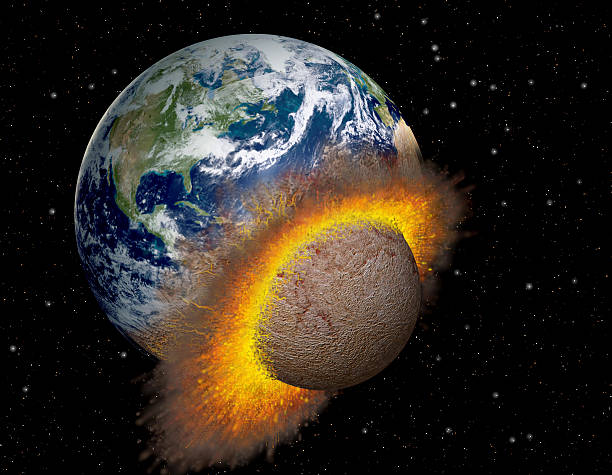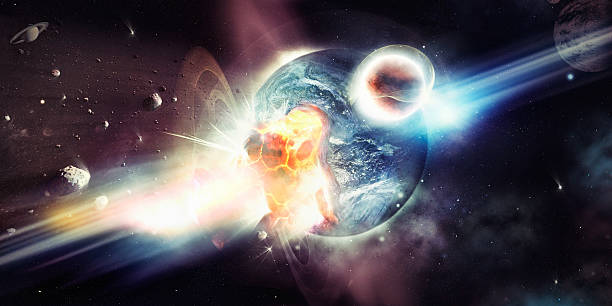Origin of Earth
It is
believed that the Earth, along with the other planets, appeared 4.5 billion
years ago as a solidified cloud of dust and gas left behind by the creation of
the Sun. For perhaps 500 million years, the interior of the Earth remained
solid and relatively cold, perhaps 2000F. The main ingredients, according to
the best available evidence, were iron and silicates, along with small amounts
of other elements, some of them radioactive. Over millions of years, the energy
released by radioactive decay? Mainly uranium, thorium and potassium? It
gradually warmed the Earth, dissolving some of its constituents. The iron
dissolves before the silicates and, being heavier, sinks towards the center.
This raised the silicates that it found there. After many years, the iron
reached the center, almost 4,000 miles deep, and began to accumulate. At that
time, there were no eyes around to see the turmoil that must have taken place
on the Earth's surface: gigantic uplifts and bubbles on the surface, erupting
volcanoes and lava flows covering all that was in sight. Eventually, the iron
in the center accumulated as a core. Around it, a thin but fairly stable crust
of solid rock formed as the Earth cooled. Crustal depressions were natural
reservoirs in which water, rising from the interior of the planet through
volcanoes and fissures, came together to form oceans. Slowly, the Earth
acquired its present appearance.
Formation
of Planets
The
following are appeared because the degrees withinside the planets’ development:
Ø
The
stars are localised fueloline lumps internal a nebula.
Ø
A
center to the fueloline cloud in addition to a spinning disc of dirt and
fueloline are created due to the gravitational pressure in the lumps.
Ø
After
this, the cloud of the fueloline condenses and the problem over the center is
modified into tiny rounded items.
Ø
These
small spherical items grow to be what are referred to as planetesimals through
a concord process.
Ø
The
smaller items begin forming large our bodies through colliding with each other
and that they stick collectively due to gravitational pressure.
Ø
In
the ultimate stage, those huge quantities of small planetesimals combination to
grow to be a smaller quantity of huge our bodies referred to as planets.





Good
ReplyDeletesoil mechanics practical
ReplyDelete